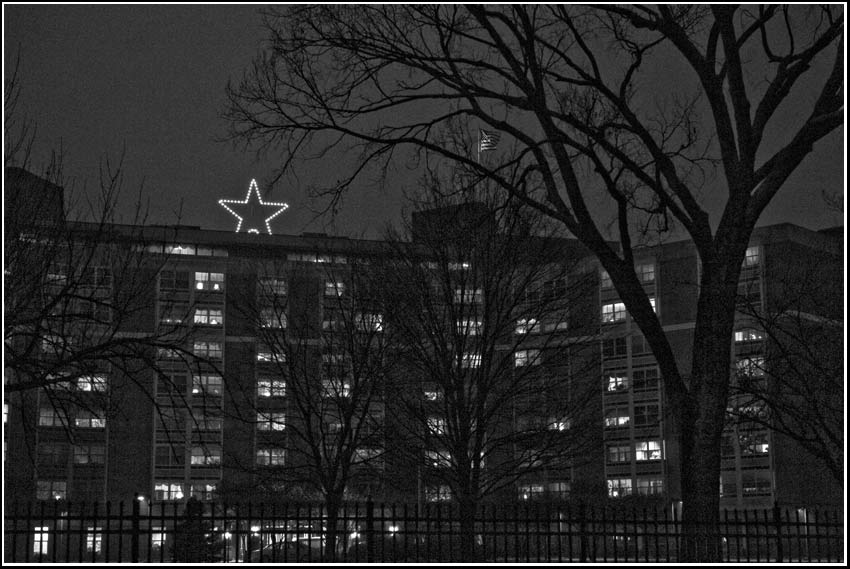
Waynesboro, Virginia
Month: December 2010
gateway

one step at a time…
(note: audio is intended to be ironic, not informative.)
chariot

–noun
1. a light, two-wheeled vehicle for one person, usually drawn by two horses and driven from a standing position, used in ancient Egypt, Greece, Rome, etc., in warfare, racing, hunting, etc.
2. a light, four-wheeled pleasure carriage.–dictionary.com
a pleasure carriage,
click above to see how the usage of that phrase has fared according to Google’s ngram viewer.
Platanus occidentalis

In tree care, there is the notion of the unhealthy unstable tree. Such trees are slated for removal.
This tree was such a tree. It had the anthracnose fungus, so some of its leaves would fall off early. Additionally, it had some dead branches in its crown.
The solution? Take it down.
I know a lot of people that have a bit of dead wood in their crown, androgenic alopecia, dental caries, neuropathy, gray hair, short-term memory loss… This is something we humans call “aging”.
In humans, this process is allowed to go on until something called “death” occurs, usually about half of a lifetime after the onset of the unattractive aging symptoms.
We hold trees to a different standard.
Westbrook Avenue

Richmond, Virginia, natal home + home away from home
busted

caught in the act, up on the furniture.
ISO the Baby Jesus

It was a good thing that Mary and Joseph were able to travel with the infant. Thousands of years later, during this season of renewal, there is some thematic veracity to the arrangement. Jesus remains hard to find, must be with M&J in Egypt…
Can you find Him? (easier to find in color). This scene is on Mountain View Street in Charlottesville, VA.
Then Herod, when he saw that he was mocked of the wise men, was exceeding wroth, and sent forth, and slew all the children that were in Bethlehem, and in all the coasts thereof, from two years old and under, according to the time which he had diligently enquired of the wise men.–Matthew 2:16
day of rest

out of sync, time to be thinking about a cradle instead of a cross
I&I

Bruce Edmonds made an excellent suggestion during the Rivanna Pumping Station meeting. It would be helpful to see a listing of sewage pumping plants permitted by the Army Corps of Engineers in a floodplain, in a park in a 100% residential area.
If there are a few of these beasts east of the Mississippi, road trip! Go see, touch and smell…
That is my recollection of what he said.
Hoping that Charlottesville Tomorrow will post audio…
Current pumping station capacity, 25 million gallons per day (mgd).
Required Capacity per Comprehensive Sewer Interceptor Study to meet a severe wet weather event (2-Year Recurrence Storm) is 51 mgd. (source, RWSA presentation)
In 2010, peak flows for this station in dry weather were around 8 million gallons per day. When it rains hard, another 43 million gallons of infiltrate and inflow rush into the homeowners’ sewer laterals and RWSA, City and ACSA pipes.
The infrastructure is full of holes…
influent

Tom Frederick of the RWSA and Janice Carroll of Hazen Sawyer confer during slide presentation regarding RWSA’s Rivanna Interceptor Sanitary Sewer Pumping Capacity Improvements.
The Rivanna Pump Station is currently located adjacent to Riverview Park, at the end of Chesapeake Street in the Woolen Mills neighborhood.
Woolen Mills Neighborhood Association president Victoria Dunham summarizes the four pumping station options presented by the RWSA below…
The RWSA has presented four potential options. The new station will have a bigger footprint, but will also need to be taller because the electrical equipment has to be above the 100-year flood level.
Option A leaves the pumping station in roughly the same vicinity, but enlarges it and moves it closer to Bev and Dimi’s house. For the many folks in the neighborhood who have fought the good fight for so many years re odor and eyesore, this is a discouraging option. They say it probably won’t smell this time. but that’s one heck of a gamble for us to take as a neighborhood. Needless to say, this is the cheapest option.
Option B moves the pumping station down into the park. That will necessitate a lot of clearing and a road system into the park to service the station. As the park was always intended to remain as untouched as possible, and this solution would shrink the acreage a bit, this is alarming.
Option C moves the pumping station onto their own property (the main plant), which make a lot of sense. There’s a significant problem with this however, because the RWSA would have to acquire an easement across four properties along E Market St. As a neighborhood, we would need to be absolutely certain that those four neighbors were completely fine with that. (I’m not 100% sure exactly which of the properties would be impacted, but guess it would be from Jon Fink and Roger Voisinet, on down the north side of the street to the old mill property. The pipe would be placed 30ft deep, which is one heck of a trench to be dug in one’s back yard.
Option D moves the pumping station across the river on the opposite bank, which is owned by State Farm. From an environmental justice perspective, this is a sound solution. When one considers the negative quality of life suffered by our neighborhood at the hands of the RWSA over the last 30+ years, this is a mighty tempting option. Needless to say, it’s also the most expensive.
To see RWSA’s powerpoint and learn more visit…
http://www.rivanna.org/pumpstation/index.htm
Past contretemps with byproducts from the RWSA’s service region:
compost
wastewater
biosolids
mother of all outhouses